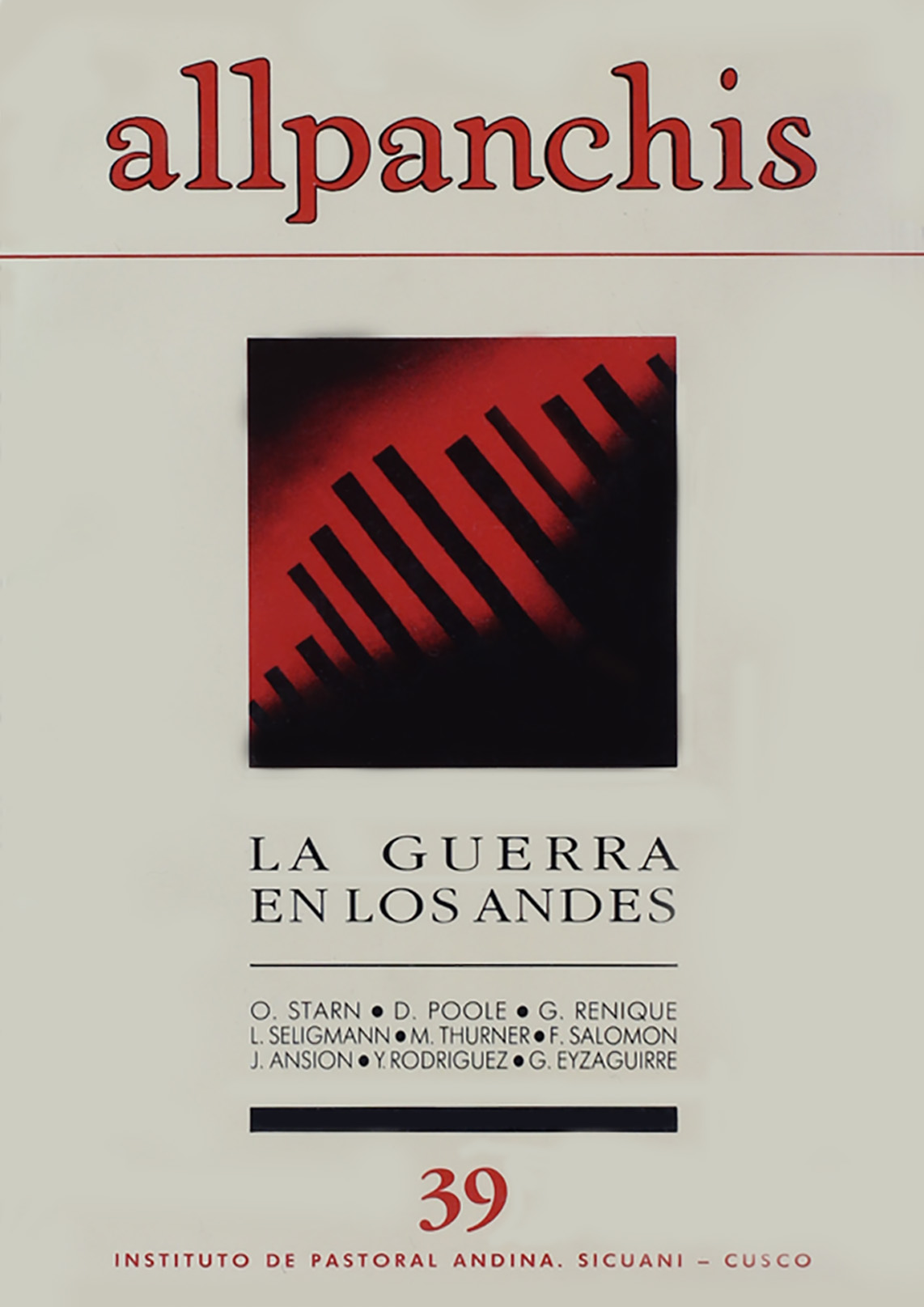Andean anthropology, "Andeanism" and the luminous path
DOI:
https://doi.org/10.36901/allpanchis.v24i39.803Keywords:
Sendero Luminoso, crítica académicaAbstract
On May 17, 1980, Shining Path militants burned the amphorae in the Andean community of Chuschi and proclaimed their intention to overthrow the Peruvian state. What Senderistas would later call the "ILA"—the beginning of the armed struggle—coincided with the 199th anniversary of the execution of Túpac Amaru II by the Spanish colonizers. According to versions of the Inkarrí myth, the corpse of the neo-Inca rebel would be destined to recompose itself in a resurrection of Andean society after the cataclysm of the conquest. But Chuschi heralded not a rebirth, but a decade of death. It inaugurated a savage war between the insurgents and the government that would cost more than 20,000 lives during the 1980s.
Downloads
Downloads
Published
Issue
Section
License
Copyright (c) 1992 Allpanchis

This work is licensed under a Creative Commons Attribution 4.0 International License.
Los trabajos publicados están sujetos a la licencia de Creative Commons versión 4.0 bajo las siguientes condiciones: CC-by: Se permite la posibilidad de copiar, distribuir, exhibir, y producir obras derivadas, siempre y cuando se reconozca y cite al autor y la fuente correctamente.
Los lectores pueden acceder gratuitamente a los contenidos de la revista siempre que no vulneren las restricciones anteriormente explicadas.
Los autores mantienen sus derechos de autor (copyright) al publicar en Allpanchis. Ceden, a su vez, por un periodo de 10 años los derechos de publicación (publishing rights) de la versión aceptada (accepted version) y publicada (published version) para la publicación impresa en el número acordado y de manera virtual sin límite de tiempo. En caso los autores u otroa editores deseen republicar el artículo, se debe solicitar el permiso necesario de Allpanchis. Sucedida esa situación, se agradece remitir la información de la republicación (un ejemplar impreso o, si es solamente virtual, el respectivo enlace).
Los autores pueden guardar el archivo de las versiones enviadas (submitted version), aceptada (accepted version) y publicada (published version) en modalidad de autorarchivo, en repositorios institucionales, temáticos o sitios web personales).





